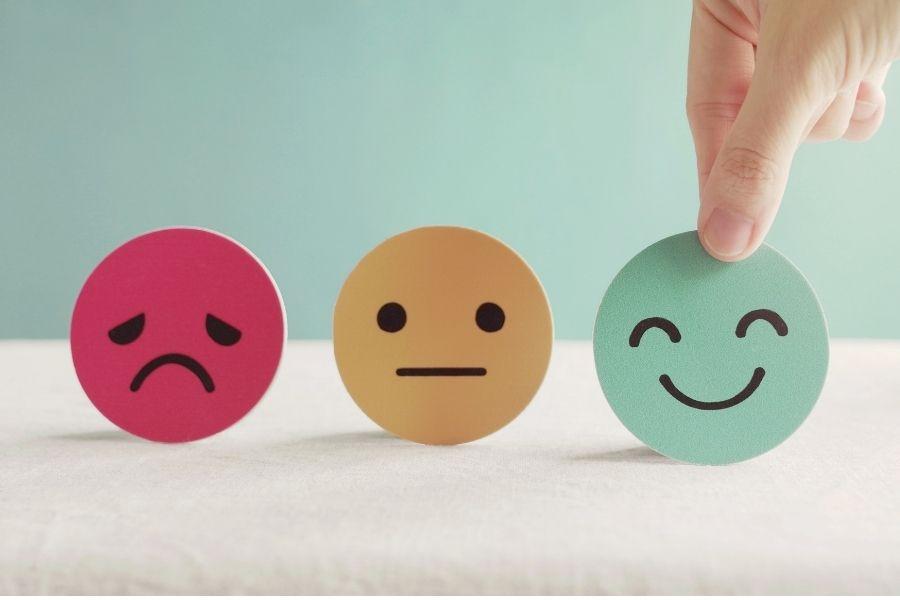Stories happen all around us every day — we just don’t often realize it. Some bring delight and relaxation; some others are not for the faint of heart. Even your morning cup of coffee or the computer you work on has stories behind them, leading to other multiverses of stories entangled with each other that ultimately make up your day.
Why Do Humans Love Stories So Much?
So it’s not surprising that in marketing, storytelling quickly becomes the core of any campaign. People just innately love to be told stories. We humans are biologically wired to take in pieces of information and then give them meaning, and stories are part of those recognizable patterns. Our interpretations of these information vary, depending on our individual ways of thinking and perception.

Moreover, stories are avenues for sensory experiences. When we listen to a rather boring, hour-long presentation, the language-processing parts of our brains take the information in, interpret it, and that’s it.
But when we’re listening to a really interesting story, our senses get activated, immersing us in the narrative. The same goes for when we read our favorite novels — the sensory cortex of our brains enables us to see, hear, smell, feel, and even taste elements of the story as if they were real.
In Comes Emotion Marketing
Stories are all about experiences. But from a marketing perspective, stories can also be powerful enough to translate to sales.
Through emotional marketing, that is.
HubSpot defines emotional marketing as “marketing and advertising efforts that primarily use emotion to make your audience notice, remember, share, and buy.” It’s about leveraging the strongest emotions of joy, sadness, anger, fear, or surprise to get responses from consumers.
But what if a person’s emotion doesn’t fall into the basic spectrum of happy, sad, afraid, or surprised? This is where the Emotion Wheel comes in handy.
Source: MBG Mindfulness
The emotion wheel, or feeling wheel, has a lot of different versions but essentially have the same purpose: to help people pinpoint the exact emotions they’re feeling. No two emotions are similarly defined. Much like colors, emotions can extend to different parts of the spectrum, similar to how there’s cyan and cerulean as shades of blue.
This bit about emotions is crucial for marketers to understand, because the specific emotion to be conveyed through the content must be identified. This will shape your campaign — all of your ads, written content, videos, visuals, and of course, your stories.
Emotional Marketing in Action
In short, emotional marketing works by targeting people’s emotions. Mixed with perfect timing, you can engage more people than you thought you would.
Take for example Gillette’s “Perfect Isn’t Pretty” ad campaign that they released just in time for the 2016 Rio Olympics. The story revolved on the less glamorous side of athletes’ superstar status, which entailed tons of sacrifice and hard work for them to even set foot on the Olympics. The emotional ad didn’t even highlight the product Gillette is known for: razors. Instead, it put the spotlight on the brand’s advocacy, earning them a larger consumer base in the process.

And in encouraging people to buy from you, emotional marketing also empowers them to be advocates of your brand through the following:
- Happiness helps increase brand awareness. Good news spreads like wildfire online, especially at this time of a global pandemic when people are constantly looking for things to lift their spirits.
- Sadness brings empathy. Incorporating empathy into your messaging helps people have an altruistic mindset and extend help to others in whatever way they can.
- Fear fosters reliability. Using the element of fear in your advertisements allows people to see your brand as a bringer of solutions, hence their increased reliance on you.
- Anger leads to virality. Content about politics and societal issues encourage people to engage, connect, and be passionate about their beliefs. Clamoring for change can even spark different movements, both online and offline.
Designing an Emotional Ad Campaign
People often rely on emotions, rather than information, when making decisions. Relevance and context is key, and to properly plan your campaign, here are 3 steps:
- Map your customer’s emotional journey. This includes finding out their pain points and their primary reasons for reaching out to you. What do they feel about dealing with these problems? What feelings do you hope to give them once you’ve solved their problems? List down all possible emotions they might be feeling; refer to the emotion wheel if you’re having trouble identifying these.
- Figure out the exact emotions you want to leverage. Don’t pick two main emotions at the same time as this may affect how your story would turn out. Choose one main emotion, then using the emotion wheel, identify other relevant feelings that you can weave into your story.
- Create a mood board. Mood boards can help you further visualize those emotions, as they make their way to your narrative. It can also serve as your outlet for other ideas that may come as you conceptualize your campaign, and so you’d know what specific resources you’ll need.
Final Thoughts
Emotional marketing wouldn’t be effective if all you have are strategies, and you don’t have a story holding your campaign together. Know your audience, be attuned to their emotions, and make sure that your strategy is still in line with company goals.
Want to take your marketing campaign to the next level? Contact us today to learn more!
